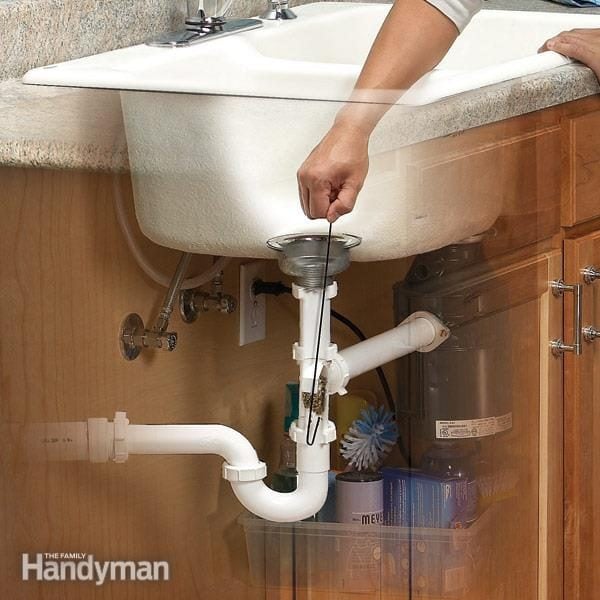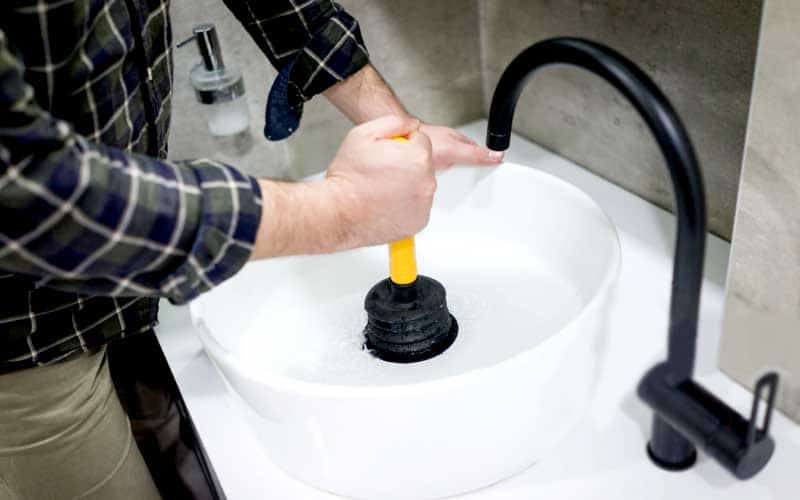Why Your Kitchen Sink Stays Stagnant - 6 Key Reasons For Poor Drainage
Why Your Kitchen Sink Stays Stagnant - 6 Key Reasons For Poor Drainage
Blog Article
They are making a few good pointers regarding Why Is My Sink Not Draining? as a whole in the article following next.

It's not regular for your cooking area sink to congest numerous times in one month. If your sink blocks two times a week, there's some trouble taking place.
An obstructed kitchen drainpipe doesn't simply slow down your duties, it degrades your entire plumbing system, gradually. Right here are some usual practices that urge sink blockages, as well as exactly how to prevent them.
You need correct waste disposal
Reusing waste is great, but do you focus on your organic waste as well? Your cooking area should have 2 different waste boxes; one for recyclable plastics and one more for natural waste, which can become compost.
Having actually a designated trash bag will certainly aid you and your household stay clear of throwing pasta as well as various other food residues down the drain. Typically, these remnants soak up moisture and end up being obstructions.
The fault isn't from your kitchen sink in any way
Possibly the problem isn't from your kitchen sink, however the whole water drainage system. In such an instance, you may discover that other sinks as well as drains pipes obtain clogged every other week. You need an expert plumbing solution to repair this.
You're throwing coffee down the drain
Utilized coffee premises and coffee beans still take in a considerable quantity of dampness. They might seem tiny sufficient to throw down the drain, however as time takes place they start to swell and also occupy more space.
Your coffee grounds ought to go into natural garbage disposal. Whatever portion runs away (probably while you're depleting) will certainly be taken care of during your monthly clean-up.
You've been eating a great deal of greasy foods
Your kitchen sink may still get blocked even with organic waste disposal. This might be due to the fact that you have a diet abundant in oily foods like cheeseburgers.
This oil layers the within pipes, making them narrower as well as more clog-prone.
Use a plunger
Your pipe had not been dealt with appropriately in the first place
If you've been doing none of the above, but still obtain normal blockages in your kitchen area sink, you ought to call a plumber. There might be a problem with just how your pipelines were set up.
While your plumber arrives, look for any kind of leaks or irregularities around your kitchen pipelines. Do not attempt to deal with the pipelines yourself. This might trigger an accident or a cooking area flooding.
Someone attempted to clean their hair in the kitchen area sink
There's a right time as well as place for every little thing. The kitchen area sink is simply not the ideal place to clean your hair. Cleaning your hair in the kitchen sink will certainly make it clog one way or another unless you utilize a drainpipe catcher.
While a drain catcher may capture the majority of the fallouts, some hairs might still get through. If you have thick hair, this might be enough to decrease your drainage and also ultimately form a blockage.
There's more dust than your pipes can take care of
If you get fruits straight from a farm, you might observe more kitchen area dust than other individuals that shop from a shopping center. You can easily fix this by cleansing the fruits and veggies effectively before bringing them right into the house.You require proper garbage disposal
My Kitchen Sink Won’t Drain - What Should I Do?
If Your Sink Has a Garbage Disposal...
Turn on the disposal. If the disposal hums and doesn’t turn, then there’s clog in the disposal unit.
Go to your circuit breaker panel, and switch off the circuit breaker to your garbage disposal.
Back in your kitchen, double-check that your garbage disposal is off by trying to turn it on. The disposal should not move, and it should not make any noise.
Lie down underneath your sink so that you can see and access the bottom of the disposal unit. Look for a hole that looks like the head of a hex-head bolt in the center of the unit.
Place an Allen wrench inside this hole and turn it from side to side until you feel a decrease in resistance and are able to rotate the wrench completely in a single direction. This action rotates your disposal’s blade manually.
Put the wrench aside, and press the disposal unit’s reset button or switch.
Flip your garbage disposal’s circuit breaker switch back on, and turn on the unit to see if the obstruction has cleared. If it hasn’t, repeat the steps above until the obstruction is removed.
How to Unclog a Kitchen Sink Drain
If you have a double bowl sink, seal one side of the sink with an airtight lid or a second plunger before plunging the other side. Otherwise, you won’t be able to create adequate suction.
Place the cup of the plunger completely over the drain opening.
Turn on the faucet, and let the water run until it completely covers the cup of the plunger.
Start plunging by pushing the plunger down and pulling up again in order to build up suction. Make sure that the edges of the plunger stay in contact with your sink, or else you’ll lose the suction.
If you have trouble forming a seal between your sink and plunger, add petroleum jelly to the mouth of your plunger, and try again.
Plunge about five or six times before removing the plunger to see if water starts to drain properly. In some cases, you’ll even be able to feel the clog become dislodged while you plunge because suddenly there will be much less resistance. Repeat the plunging process until the clog clears.
Once water is draining properly again, run hot water down the drain for 5 minutes to help clear away grease, grime, and debris from the clog. https://www.plumbingjoint.com/blog/2019/august/my-kitchen-sink-won-t-drain-what-should-i-do-/

My Kitchen Sink Won’t Drain - What Should I Do?
If Your Sink Has a Garbage Disposal...
How to Unclog a Kitchen Sink Drain
https://www.plumbingjoint.com/blog/2019/august/my-kitchen-sink-won-t-drain-what-should-i-do-/
As a passionate person who reads about Five Ways to Fix a Slow Sink Drain, I figured sharing that piece of content was essential. Sharing is nice. You just don't know, you could be helping someone out. I take joy in reading our article about Five Ways to Fix a Slow Sink Drain.
Check Us Out
Report this page